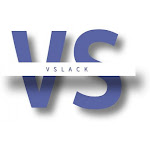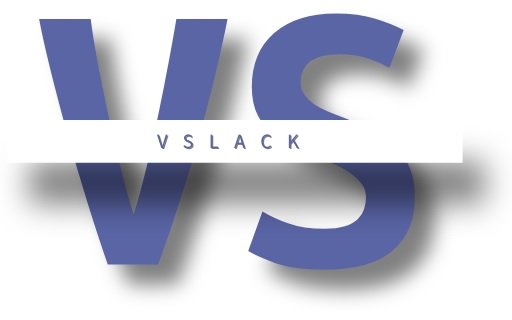Introduction
In the dynamic landscape of cloud computing, businesses are constantly seeking innovative solutions to optimize their operations, enhance agility, and drive digital transformation. One such solution that has gained significant traction in recent years is Anthos, the multicloud platform by Google. In this article, we'll delve into what Anthos is, its key features, benefits, use cases, architecture, deployment options, challenges, and future trends.
Understanding Anthos
Definition and Overview
Anthos, formerly known as Google Cloud Services Platform, is a modern application platform that enables organizations to build, deploy, and manage applications seamlessly across on-premises data centers, Google Cloud Platform (GCP), and other cloud environments. It provides a consistent development and operations experience, allowing teams to innovate faster and deliver value to customers more efficiently.
Key Features
Anthos offers a comprehensive set of features designed to address the challenges of multicloud environments:
- Hybrid and Multicloud Management: Anthos provides a unified control plane for managing applications and services across hybrid and multicloud environments, offering centralized visibility, governance, and security.
- Containerization and Orchestration: Built on Kubernetes, Anthos enables organizations to containerize their applications and automate deployment, scaling, and management with ease.
- Service Mesh: Anthos incorporates Istio, an open-source service mesh, for managing microservices communication, ensuring reliability, security, and observability.
- Policy-Based Automation: Anthos Config Management allows organizations to define and enforce policies consistently across clusters, ensuring compliance with regulatory requirements and security best practices.
- Monitoring and Logging: Anthos integrates with Google Cloud's monitoring and logging services, providing real-time insights into application performance, availability, and security.
Benefits of Anthos
Flexibility and Portability
One of the primary benefits of Anthos is its flexibility and portability. By abstracting away the underlying infrastructure, Anthos allows organizations to run their applications anywhere—on-premises, in the cloud, or across multiple clouds—without being locked into a specific vendor or environment.
Simplified Operations
Anthos simplifies operations by providing a unified platform for managing applications, infrastructure, and services. With Anthos, organizations can automate tasks such as provisioning, scaling, and upgrading, reducing manual effort and minimizing the risk of errors.
Security and Compliance
Anthos enhances security and compliance by offering built-in features such as identity and access management, encryption at rest and in transit, and vulnerability scanning. With Anthos, organizations can ensure that their applications and data are protected against threats and breaches.
Use Cases
Hybrid Cloud Deployment
Anthos enables organizations to adopt a hybrid cloud strategy, leveraging both on-premises infrastructure and cloud resources. By extending GCP services to their data centers, organizations can achieve greater flexibility, scalability, and cost savings while maintaining control over sensitive data and workloads.
Application Modernization
Anthos facilitates application modernization initiatives by providing tools and frameworks for containerization, microservices architecture, and continuous integration/continuous deployment (CI/CD). With Anthos, organizations can modernize their legacy applications, improve agility, and accelerate time-to-market.
Disaster Recovery
Anthos offers robust disaster recovery capabilities, allowing organizations to replicate their applications and data across multiple locations and clouds. In the event of a disaster or outage, Anthos enables seamless failover and recovery, ensuring business continuity and minimizing downtime.
Anthos Architecture
Components and Modules
Anthos consists of several components and modules, including:
- Anthos Kubernetes Engine (GKE): Managed Kubernetes service for running containerized workloads.
- Anthos Config Management: Policy and configuration management tool for enforcing governance and compliance.
- Anthos Service Mesh: Service mesh for managing microservices communication and securing application traffic.
- Anthos Security Command Center: Security and threat detection platform for monitoring and protecting cloud resources.
Integration with Google Cloud Services
Anthos integrates seamlessly with Google Cloud services, including Cloud Storage, BigQuery, Cloud Pub/Sub, and Cloud Spanner. By leveraging these services, organizations can build scalable, resilient, and cost-effective applications that take full advantage of the power and capabilities of Google Cloud.
Getting Started with Anthos
Deployment Options
Organizations can deploy Anthos in multiple ways, depending on their requirements and preferences:
- On-Premises Deployment: Anthos can be deployed on-premises, allowing organizations to modernize their existing infrastructure and applications without migrating to the cloud.
- Cloud Deployment: Organizations can deploy Anthos on Google Cloud Platform (GCP), leveraging Google's global infrastructure, security, and scalability.
- Multicloud Deployment: Anthos supports multicloud deployment, enabling organizations to run their applications across multiple cloud providers, including AWS and Azure.
Pricing and Licensing
Anthos is available as a subscription-based service, with pricing based on factors such as the number of clusters, nodes, and support levels. Google offers various pricing options, including pay-as-you-go and committed use discounts, to meet the needs of different organizations.
Challenges and Considerations
Complexity of Implementation
One of the challenges of adopting Anthos is the complexity of implementation, especially for organizations with legacy infrastructure and applications. Migrating to a containerized, microservices-based architecture requires careful planning, expertise, and investment in training and resources.
Cost Management
Another challenge of Anthos is cost management, as organizations may incur additional expenses for infrastructure, licensing, and support. It is essential for organizations to carefully evaluate the total cost of ownership (TCO) and ROI of Anthos before making a decision.
Vendor Lock-in
Finally, vendor lock-in is a consideration for organizations using Anthos, as they may become dependent on Google's ecosystem and services. It is essential for organizations to assess the long-term implications of vendor lock-in and consider strategies for mitigating risk, such as using open-source technologies and adopting multicloud architectures.
Future Trends and Innovations
Looking ahead, the future of Anthos is filled with exciting possibilities and innovations. Google continues to invest in Anthos, adding new features, integrations, and capabilities to meet the evolving needs of customers. Key trends and innovations to watch for include:
- AI and Machine Learning: Integration of AI and machine learning capabilities into Anthos for intelligent automation, predictive analytics, and anomaly detection.
- Edge Computing: Expansion of Anthos to edge computing environments, enabling organizations to deploy and manage applications closer to the point of use for low latency and high performance.
- Serverless Computing: Integration of serverless computing capabilities into Anthos for greater agility and efficiency, allowing organizations to focus on building and scaling applications without managing infrastructure.
Conclusion
In conclusion, Anthos represents a significant evolution in cloud computing, offering organizations the flexibility, scalability, and innovation needed to thrive in today's digital economy. By providing a unified platform for managing applications and services across hybrid and multicloud environments, Anthos empowers organizations to accelerate innovation, reduce costs, and improve security and compliance. As organizations embark on their cloud journey, Anthos serves as a strategic enabler, unlocking new possibilities and driving business growth in the era of digital transformation.
FAQs (Frequently Asked Questions)
Is Anthos suitable for small and medium-sized businesses (SMBs)?
- Yes, Anthos is designed to meet the needs of organizations of all sizes, including SMBs. While larger enterprises may benefit from Anthos' scalability and enterprise-grade features, SMBs can leverage Anthos to modernize their infrastructure, improve agility, and drive innovation.
Can Anthos be integrated with existing cloud platforms and services?
- Yes, Anthos is designed to be platform-agnostic and can be integrated with existing cloud platforms and services, including AWS and Azure. This allows organizations to leverage their existing investments while taking advantage of Anthos' advanced capabilities for hybrid and multicloud deployment.
What are the key security features of Anthos?
- Anthos offers a range of security features, including identity and access management, encryption at rest and in transit, vulnerability scanning, and security monitoring and logging. These features help organizations protect their applications and data against threats and breaches in a multicloud environment.
How does Anthos compare to other multicloud platforms?
- Anthos distinguishes itself from other multicloud platforms by offering a comprehensive set of features, including hybrid and multicloud management, containerization and orchestration, service mesh, policy-based automation, and integrated monitoring and logging. Additionally, Anthos' integration with Google Cloud services provides unique advantages in terms of scalability, performance, and innovation.
What are the typical use cases for Anthos?
- Anthos is used for a variety of use cases, including hybrid cloud deployment, application modernization, disaster recovery, edge computing, and multicloud migration. Organizations across industries, such as finance, healthcare, retail, and manufacturing, leverage Anthos to achieve their business goals and drive digital transformation.








.jpeg)

0 Comments